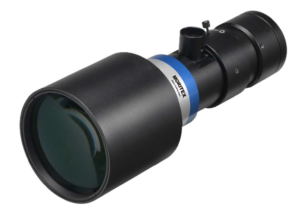The Anatomy of Machine Vision Lenses: Unraveling the Mystery
Exploring Lens Types: Which One Fits Your Needs?
Machine vision lenses come in an array of types, each engineered for specific applications, thus making the choice critical for achieving optimal results. The most common types of machine vision lenses include fixed focal length lenses, zoom lenses, and macro lenses. Fixed focal length lenses are renowned for their simplicity and generally yield superior image quality because of their less complex design. They are ideal for applications where the distance to the subject remains constant, thereby providing clarity and sharpness.
On the other hand, zoom lenses are versatile tools that offer varying focal lengths, allowing operators to adjust the field of view without physically moving the camera. This makes them particularly appealing for dynamic environments or scenarios where the subject’s distance changes frequently. Macro lenses, specifically designed for extreme close-up imaging, are vital in industries such as electronics and pharmaceuticals, where minute details are critical. The selection process requires an understanding of not just the type of lens but also how it interacts with other imaging components like sensors and lighting, as these factors collectively dictate the quality of the final image.
Decoding Optical Terminology: Understanding Focal Length and Aperture
Focal length is a pivotal concept in the realm of machine vision optics, indicated in millimeters (mm). It describes the distance from the lens’s optical center to the image sensor at which light rays converge to form a clear image. A short focal length, typically less than 35mm, will provide a wider field of view, beneficial for capturing larger scenes or objects. Conversely, a longer focal length, generally above 100mm, narrows the field of view and is useful for capturing detailed images of distant subjects.
Aperture, expressed as an f-stop number, relates to the size of the lens’s opening. A lower f-number signifies a larger aperture, allowing more light to enter. This characteristic is advantageous in low-light scenarios, contributing to improved image brightness and reducing exposure times. However, a larger aperture can also lead to a shallower depth of field, which means that while the subject can be in precise focus, the background may appear blurred a quality that can either be desirable or problematic, depending on the application. Mastering these terms will greatly enhance one’s ability to select an appropriate lens and navigate through the myriad choices available in the machine vision domain.
How Lens Coatings Improve Image Quality and Performance
The importance of lens coatings in machine vision cannot be overstated. These coatings minimize reflections and optimize light transmission, thus significantly enhancing image quality. Common coatings include anti-reflective (AR) coatings, which mitigate glare and ghosting, a vital consideration in bright-lit environments or when dealing with reflective surfaces. Multi-coated lenses, which involve applying several layers of coatings, offer enhanced light transmission and contrast while reducing optical aberrations.
Additionally, special coatings can be tailored for specific applications, such as water or dust-repellent coatings in environments prone to contamination. These features extend the lifespan of lenses while maintaining their performance standards. Analysts and engineers must consider these attributes carefully when assessing and selecting machine vision lenses, as the right coating can make a significant difference in both image quality and lens durability. In an ever-evolving industrial landscape, staying abreast of coating innovations becomes essential for ensuring superior imaging outcomes.
Choosing the Right Machine Vision Lens for Your Application
Factors to Consider: Resolution, Distortion, and Contrast
When selecting machine vision lenses, various factors come into play that are critical to meeting specific project requirements. Resolution is of paramount importance; it determines the level of detail captured in an image. Manufacturers often provide specifications on the lens’s resolving power, measured in line pairs per millimeter (lp/mm). A lens with a higher resolution capability will generally yield clearer, more precise images, which are vital in applications requiring meticulous inspections, such as semiconductor fabrication or quality control in manufacturing.
Distortion is another factor that must not be overlooked. Ideal machine vision lenses exhibit minimal distortion, ensuring that the dimensions of objects in the captured image accurately reflect their real-world proportions. This characteristic is particularly essential in metrology applications where dimensional accuracy and precision are crucial. Lastly, contrast can often be overlooked, but it plays a pivotal role in how images are perceived. High-contrast images provide a clearer distinction between different shades and colors, enhancing the overall quality of the image captured. By carefully evaluating these factors in tandem, operators can make educated decisions that align with their machine vision objectives.
Application-Specific Lenses: From Automotive to Electronics
Different industries demand specific lens capabilities to meet their unique imaging challenges. For instance, in the automotive sector, high-speed cameras paired with fast, low-distortion lenses are essential for monitoring production lines and inspecting parts for consistency and quality. Applications may also involve imaging environments that require lenses with robust performance in dynamic lighting conditions.
In the electronics sector, as mentioned earlier, macro lenses are indispensable for inspecting small components soldered onto circuit boards. These lenses must achieve high levels of detail and resolution, as even minor imperfections can lead to significant faults. Furthermore, the pharmaceutical industry benefits from specialized lenses that can provide detailed images necessary for analyzing vials and packaging integrity. Understanding how the requirements differ across industries highlights the necessity for tailored lens solutions that enhance both efficiency and accuracy in various applications.
Cost vs. Quality: Finding the Sweet Spot in Machine Vision Lenses
When navigating the purchasing landscape for machine vision lenses, striking a balance between cost and quality is often a significant concern for industries aiming to optimize operational budgets without sacrificing performance. Budget constraints may drive equipment managers to consider lower-cost alternatives that, while appealing, can lead to long-term consequences such as reduced reliability or inferior image quality. However, investing in high-quality lenses often translates to fewer maintenance issues, reduced downtime, and enhanced inspection capabilities, which justify the upfront cost.
Moreover, the total cost of ownership should be evaluated alongside initial purchase prices. High-quality lenses typically have longer lifespans and less susceptibility to optical issues, which can save countless dollars in replacement and maintenance costs. Forming a clear understanding of application requirements against budget limitations enables industry professionals to make knowledgeable decisions that optimize both performance and efficiency in their machine vision systems.
Innovations in Lens Technology: What’s New and Exciting?
Advancements in Autofocus and Zoom Mechanisms
The landscape of machine vision lenses continues to evolve with the rapid pace of technological advancements, particularly in autofocus and zoom mechanisms. Traditional autofocus systems, while functional, sometimes struggle with speed and accuracy in fast-moving environments. Recent developments in servo and stepper motor technologies have significantly improved the responsiveness of autofocus systems, thereby enhancing the efficiency of industrial inspection processes. These innovations allow machines to quickly lock onto subjects even in cluttered or dynamic settings, which is vital for high-speed applications.
Furthermore, advancements in digital zoom mechanisms, which interpolate pixels to magnify images, are pushing the boundaries of what is possible in machine vision. This technology allows for seamless transitions between different magnifications, resulting in smoother, more defined outputs. As a result, manufacturers can adapt lenses to meet varied inspection and monitoring tasks without needing multiple physical lenses, leading to more compact systems and greater operational flexibility.
The Role of AI in Enhancing Lens Performance
Artificial Intelligence (AI) is transforming machine vision technology in groundbreaking ways, particularly in enhancing lens performance. AI algorithms can analyze and interpret images captured by machine vision systems, allowing lenses to optimize settings in real time based on environmental conditions, lighting, and the specific characteristics of the subject being observed. This adaptable technology significantly improves the accuracy of inspections and can eliminate the need for manual adjustments, thus freeing up operators to focus on other critical tasks.
Moreover, machine learning models can learn from previous inspections, identifying patterns and suggesting the best imaging settings for future tasks. For example, an AI-enabled lens can remember optimal configurations for inspecting varying types of components, enabling it to adjust instantly when a new type of object is presented. This adaptive capability revolutionizes operational efficiency and enhances the overall reliability of machine vision systems.
Future Trends: Miniaturization and Adaptability in Lens Design
Looking ahead, the trend of miniaturization in lens design holds vast potential for optimizing machine vision systems. Advances in technology mean that manufacturers are designing smaller, more compact lenses without sacrificing image quality or performance. This miniaturization opens up exciting possibilities in fields such as robotics, where space is often severely limited, enabling the integration of more powerful imaging systems into smaller platforms.
Additionally, adaptability will become increasingly crucial. Lenses that can be easily modified or reconfigured for various applications without the need for extensive hardware changes will allow industries to operate more flexibly and efficiently. This paves the way for customizable optics that can adapt to different images based on the task at hand, improving both versatility and user experience.
Maintenance and Troubleshooting: Keeping Your Lenses in Top Shape
Cleaning Techniques: Do’s and Don’ts for Lens Care
Proper maintenance of machine vision lenses is essential to sustaining image quality and longevity. The first step in effective lens care is cleaning, which should be performed periodically and with the utmost care. The do’s of lens cleaning include using a microfiber cloth specifically designed for optical surfaces to gently wipe any dust or smudges. It’s also wise to use a dedicated lens cleaning solution or compressed air for debris removal. Avoiding aggressive cleaning solutions is paramount since they can damage lens coatings and affect performance.
Conversely, the don’ts of lens cleaning are equally important. Users should never apply excessive pressure to the lens surface, as this can scratch or scuff the glass. Additionally, it is crucial to refrain from using household cleaners or materials that can leave residues or scratches. Formulating strict cleaning protocols will help ensure that lenses remain in optimal working condition and that image quality does not degrade over time.
Common Issues: Identifying and Fixing Optical Aberrations
Optical aberrations like chromatic aberration, barrel distortion, or field curvature can plague machine vision systems, leading to compromised image quality. Identifying these issues often involves thorough analysis and testing of image outputs. Chromatic aberration, characterized by color fringing along edges, can typically be minimized by using high-quality lenses with specialized coatings designed to correct these distortions. Barrel distortion appears as a bulging effect, primarily seen in wide-angle lenses, and can be addressed with post-processing software designed to correct lens distortion.
Individuals operating machine vision systems should be adept at recognizing these aberrations and employing both preemptive measures and corrective actions. Regular calibration of the imaging system ensures that aberrations are minimized, preserving the integrity of captured images while maintaining overall system performance.
When to Upgrade: Signs It’s Time for a New Lens
Recognizing the right moment to upgrade your lens is critical to sustaining superior imaging performance. Key indicators that suggest it’s time for a new lens include consistent image quality degradation, an increase in optical aberrations, and a need for greater flexibility in applications. If images start appearing soft, lack contrast, or are marred by distortion, it may indicate that the current lens is no longer capable of meeting the demands of specific applications.
Color fidelity and light transmission also play crucial roles in image quality. If older lenses struggles in retaining color accuracy or brightness under varied lighting conditions, an upgrade could bring significant improvements. Lastly, as imaging requirements evolve with technological advancements, the necessity for newer functionalities such as faster autofocus systems or integrated AI capabilities may precipitate the need for lens upgrades. Timing these upgrades effectively will benefit overall operational efficiency and ensure that the imaging capabilities of machine vision systems remain robust and reliable.











Leave a comment